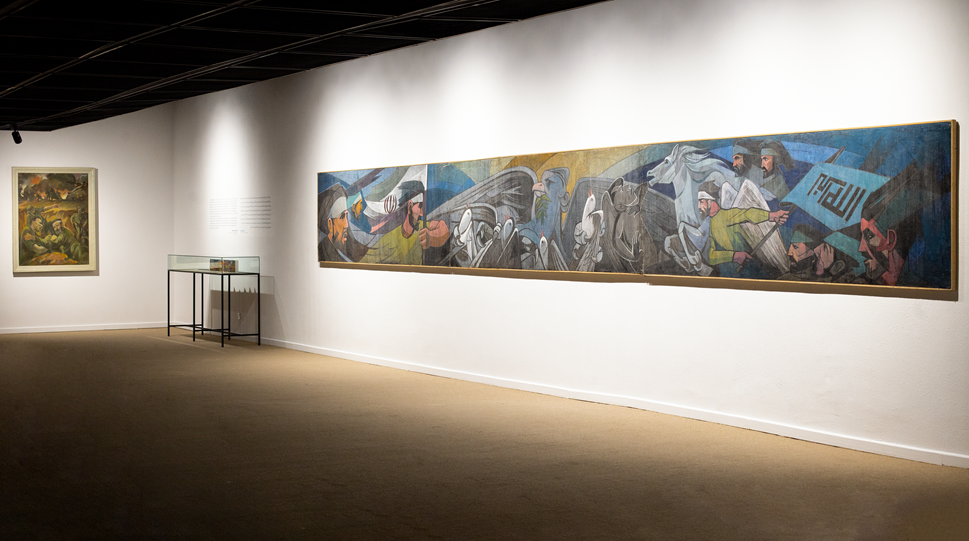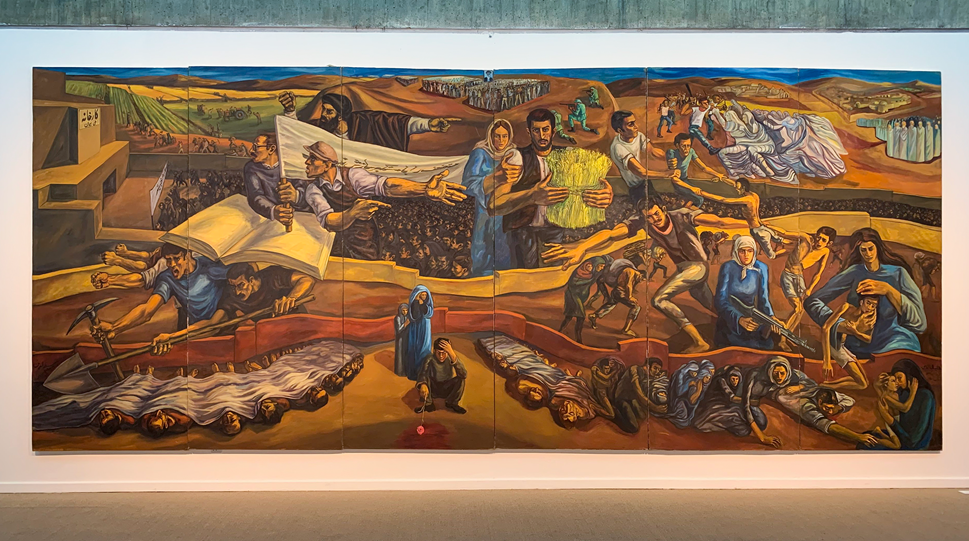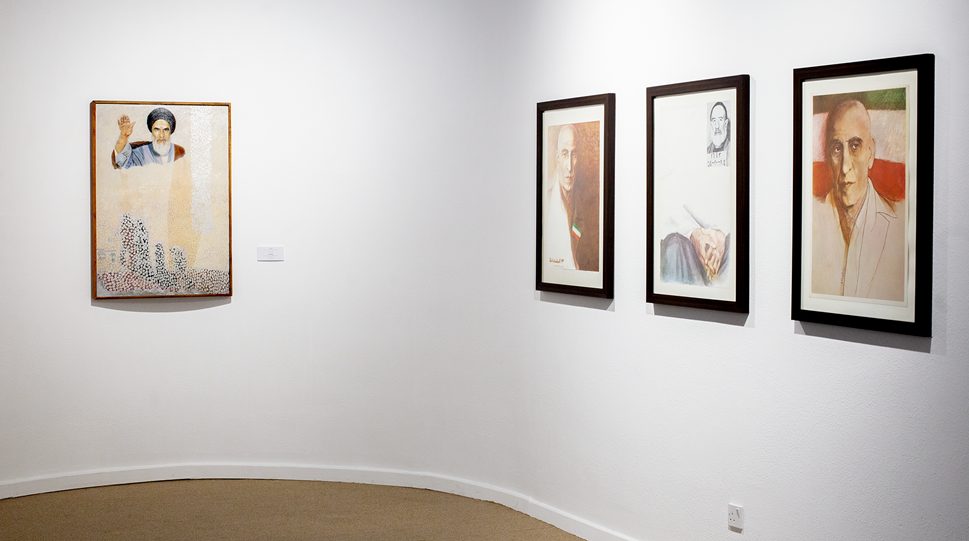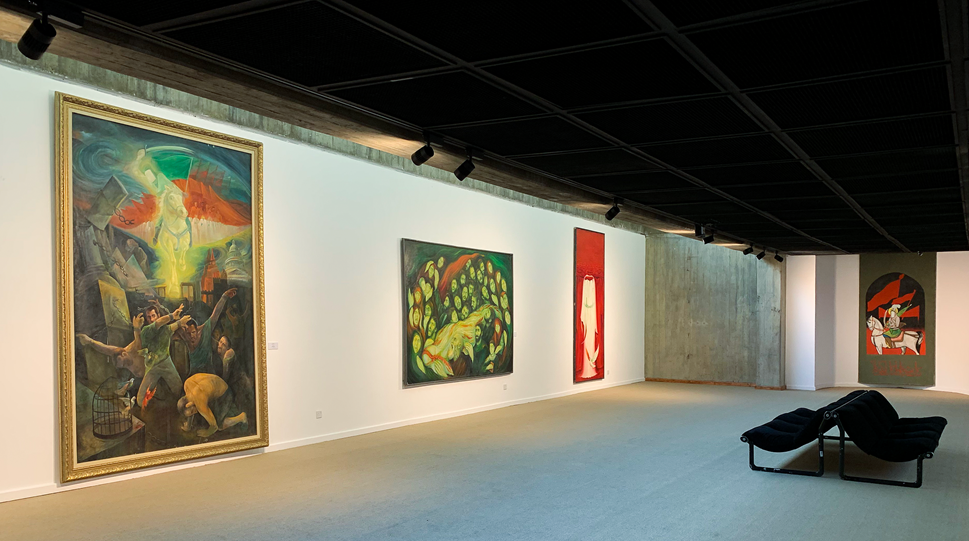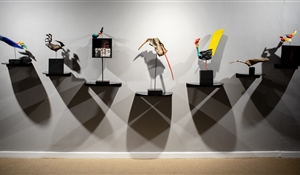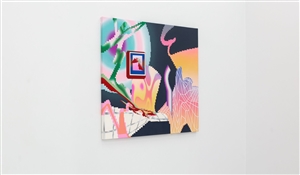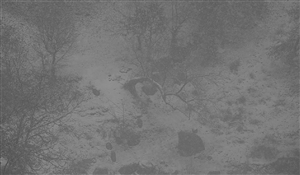A Review of "Mirrored Reflections" Show at TMoCA
19 Jan 2022Original text in Farsi by Soheila Habibi
Translated to English by Sara Faezypour
The new show at Tehran Museum of Contemporary Art entitled "Mirrored Reflections" (A Study of Transformations in Iranian Contemporary Art 1974 – 1984), opened on 19 January and continues until 27 February 2022. Selected by Kianoush Motaghedi, the event's curator, over 90 artworks including painting and photography by 37 Iranian and 4 foreign artists have been collected at this show, attempting to address the protest and revolutionary art, leading to the war art through an exhaustively historiographic and research perspective. The existing paintings and photographs are accompanied by music related to the revolution, adding to the appealing atmosphere of the display.
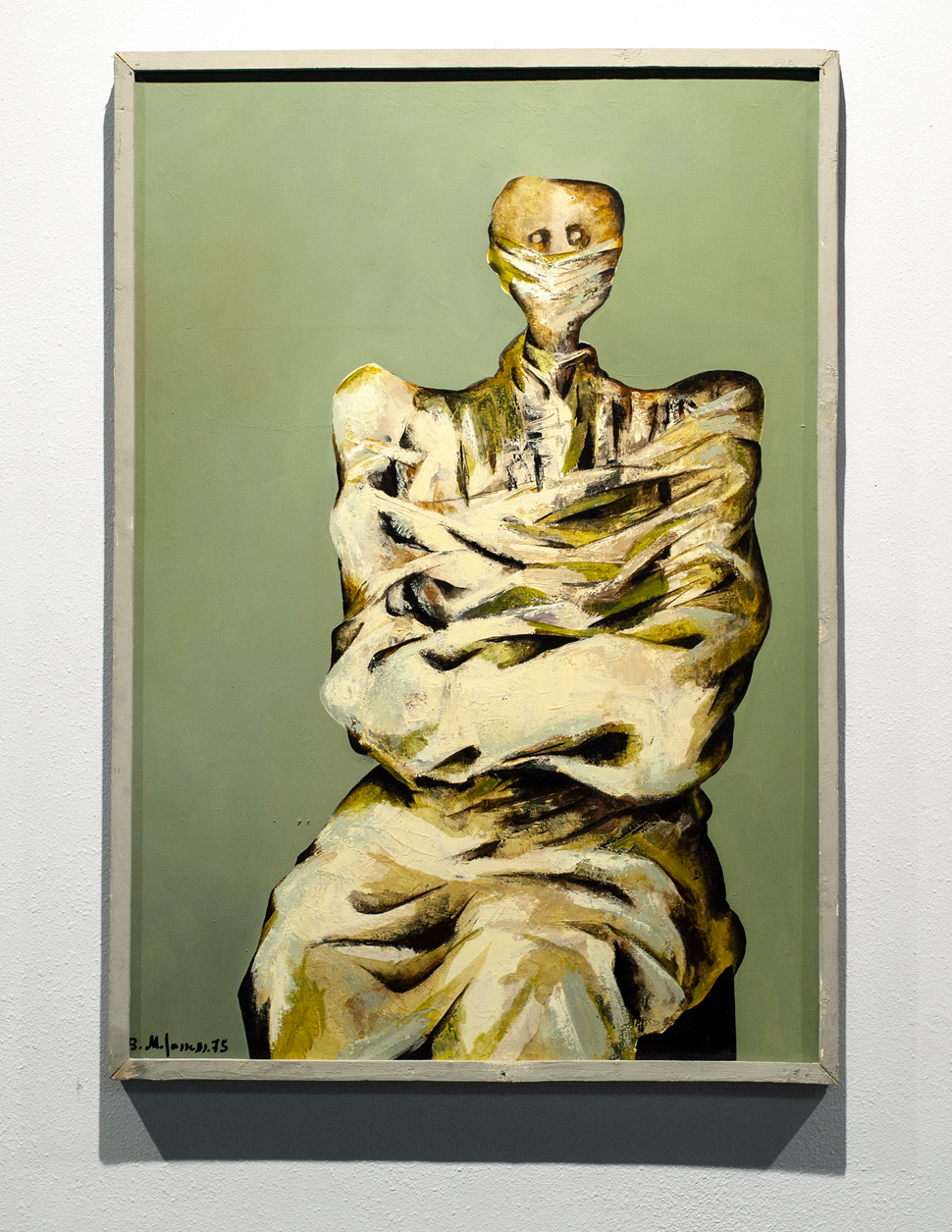
Artwork by Bahman Mohassess
It is worth mentioning that a great deal of the artworks featured in the show has been exposed to the public for the first time. Some of the artworks are from the collection of TMoCA as well as other museums and personal collections of art collectors and artists themselves. Most of the artworks at the "Mirrored Reflections" show are created on a large scale; what is noteworthy is that this approach has been rarely seen after the war period. By attending the show, the audience of the young generation can gain a fascinating experience from viewing the enormous and polyptych canvases.
In the first step, at the entrance of the museum, we encounter works that can be considered as the backdrop of protest art, including paintings by Alireza Espahbod, Leyly Matine Daftary, Bahman Mohassess, Ardeshir Mohassess, Rahim Nazhfar, Manouchehr Safarzadeh (Mash Safar) and Mohammadhossein Halimi which are placed next to two tableaux of Coffeehouse painting. This accompaniment can be seen as a sign of connection between Iranian protest art and religious and folk art. What is remarkable about the work by Bahman Mohassess, "Always Iran", is that before the Iranian Revolution, it was given a different title but the artist decided to change it with the outbreak of the Revolution, indicating the massive impact the revolutionary transformations had on the artists of the time.
Other artists featured in the show are Hassan Esmaeilzadeh, Iraj Eskandari, Morteza Asadi, Hannibal Alkhas, Nasrollah Afjei, Parvaneh Etemadi, Ayoub Emdadian, Parviz Izadpanah, Reza Bangiz, Nasser Palangi, Mohammadali Taraghijah, Kazem Chalipa, Ghasem Hajizadeh, Hossein Khosrowjerdi, Keikhosro Khoroush, Jamaledin Khorami Nejad, Bahram Dabiri, Masoud Sadedin, Kamran Shirdel, Aliakbar Sadeghi, Habibollah Sadeghi, Gholam Ali Taheri, Mohammad Fassounaki, Amrollah Farhadi, Niloufar Ghaderinejad, Morteza Katozian, Mostafa Goudarzi, Hossein Mahjoubi, Sirous Moghaddam and Jalal Motevali.
After entering the main section, we are faced with a huge six-part polyptych by Ayoub Emdadian which after 40 years is being exposed to the public for the first time. The featured artworks in each hall adhere to a general approach, having two main elements of "leadership" and "the people". In each section, a portrait of the leader is positioned at the end of the hall while the surrounding walls are filled with paintings of the revolutionary people.

The museum's side chambers present significant protest, revolutionary, and war art formation points. For example, in one section, we can see the reconstruction of the first show held just one year after the Revolution with the Museum of Contemporary Arts's reopening, curated by Morteza Momayez. The poster, invitation card, and catalog of the event accompanied by photographs depicting the unique manner in which the artworks were arranged are all gathered in this section. The event featured a myriad of artworks at the time; however, the main core of the reconstructed show consists of artworks by protesting artists of the pre-revolution period.
One of the influential events regarding protest art in Iran was in March 1979 when Hannibal Alkhas, Masoud Sadedin, Bahram Dabiri, Niloufar Ghaderinejad, and Manouchehr Safarzadeh gather at Ferdows Garden, occupying themselves with painting for the public viewers during one month. The created works of art all had revolutionary themes. In "Mirrored Reflections", one of the main halls of the museum is designated for the created artworks during that month as well as the photographs of the event.
What is eye-catching are the photographs of the revolution period in one section of the show, photographed by Michel Setboun, who covered the events of Iran, Afghanistan, and Pakistan as a news and war photographer for Sipa and Black Star agencies.
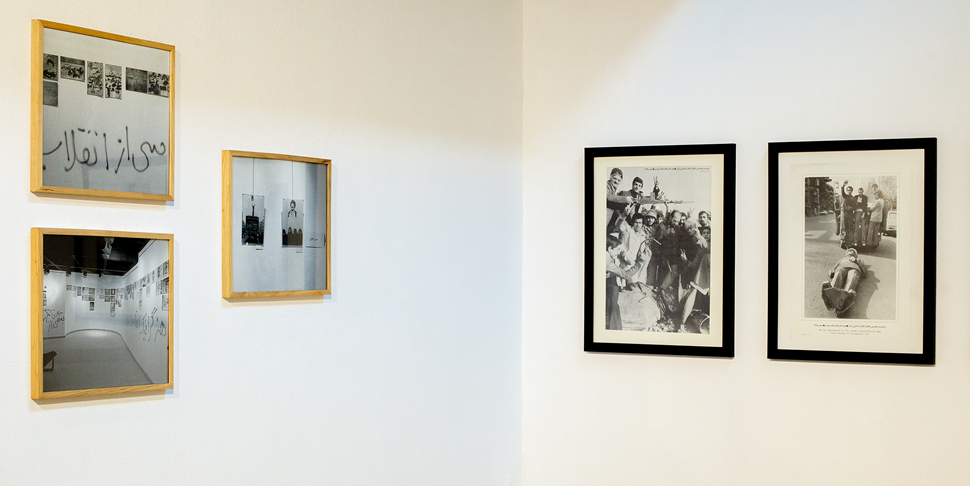
From the beginning of art history, the art of different geographies has influenced each other, which is quite evident in protest and revolutionary art. The revolutions in Russia and Mexico led to major transformations in the field of art in both countries; during the pre-revolution period and the war, Iranian artists were greatly influenced by the artworks of the revolutionary art of Russia and Mexico, which is addressed in one section of "Mirrored Reflections".
The show ends with works by artists in the field of Islamic Thought and Art. From March to April 1979, a group of artists presented their works unanimously at Hosseiniyeh Ershad. This group of painters introduced themselves as an organization called "the Field of Islamic Thought and Art", and after joining Islamic Development Organization they were known as the "Hozeh Honari".
In general, it seems that the main idea of the show is the historiographical study of a significant period of Iran's art history. Having an objectional approach, the artists began creating artworks in every notable media such as literature, music, photography, and painting in that period, a manner which resulted in protest art, leading to revolutionary and war art afterward. Walking through the path of the featured artworks at the museum, this artistic development could be thoroughly seen and observed.
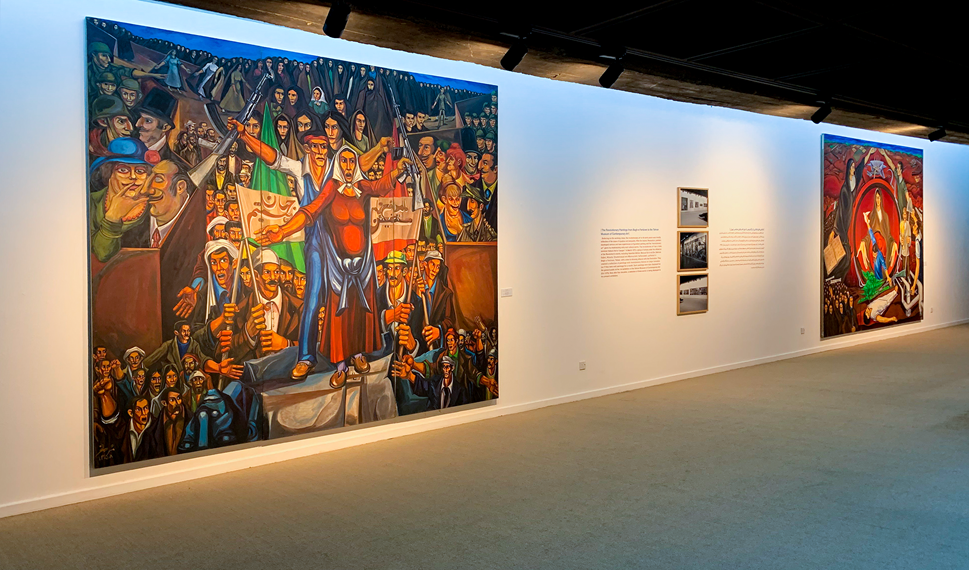
According to Ehsan Aghaei, the director of TMoCA, around three years have been invested in research and examination for the organization of the show. In addition, a book on the show containing several specialized articles, examining the existing artworks through various perspectives such as art sociology and semiotics as well as reviewing the main concept of revolutionary and protest art, will be published next month.



